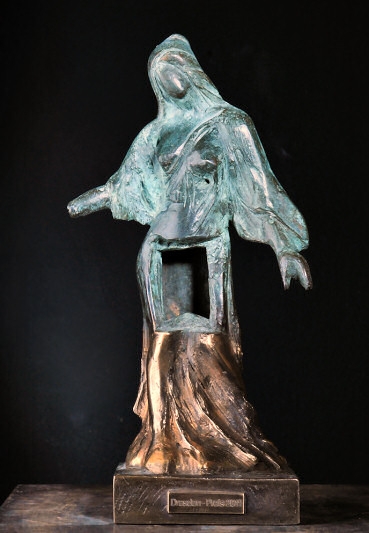Very little of Dresden was left after the city was fire bombed in 1945. The Soviet GDR re-built many of the structures that had been destroyed, but had to raze others. A monument to Mozart, in the Bürgerwiese Park, depicted three Graces dancing around an altar dedicated to the composer. Two of the statues survived with relatively minor damage, but only half of one statue remained and that was removed to the Zionskirche ruins “lapidarium” where fragments of the ruined city are stored to await possible restoration.
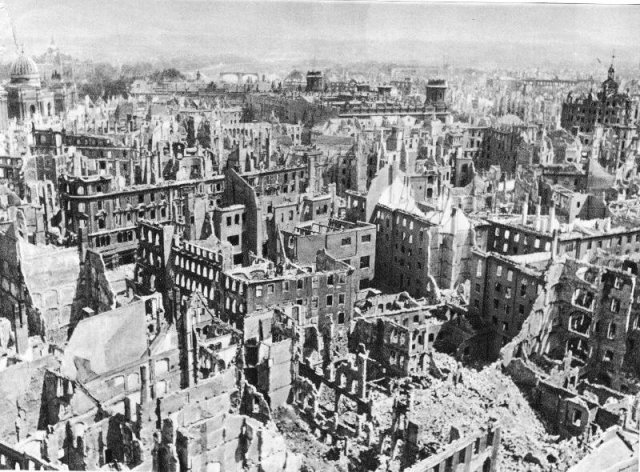
Dresden, 1945
Hermann Kurt Hosaeus won the commission to design the Mozart memorial in 1904. He was not yet thirty years old. There was a bit of a scandal about this: Hosaeus was young, unknown, and there was little in the way of completed works for the jury to examine. In 1907, the monument was revealed. Again there was some grumbling, but most accepted the baroque vivacity of Hosaeus‘ work.

The reconstructed Mozart memorial. Ernst is the right-hand figure that appears very serious, indeed. [Wikimedia, photo: Kolossos]
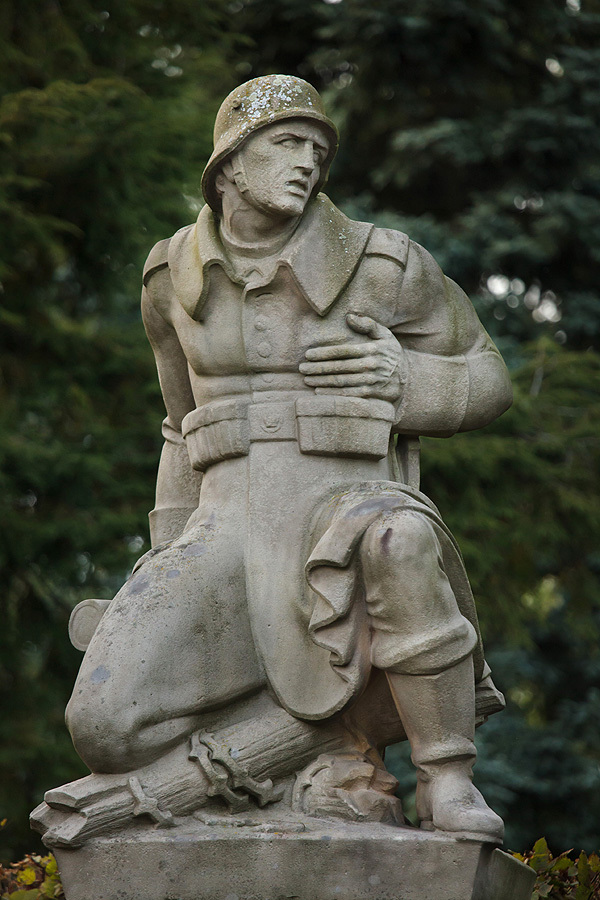
War memorial near Bünde. Sculpted in 1926. Hosaeus often used a wounded soldier motif. [ photo: Vova Pomortzeff from The Woe of the Vanquished]
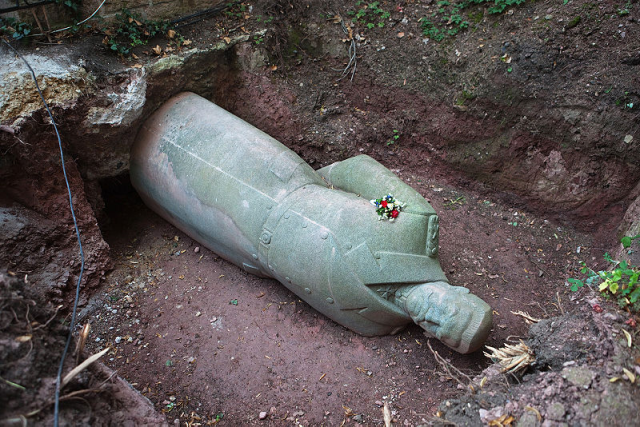
Statue of Hindenburg by Hosaeus, unearthed near the Kyffhäuser Memorial. Sculpture was created 1939, discovered in 2009. [Wikimedia, photo by Andreas Vogel] (News photo showing Hitler at this statue’s unveiling and curious story of the work’s burial on this page.)
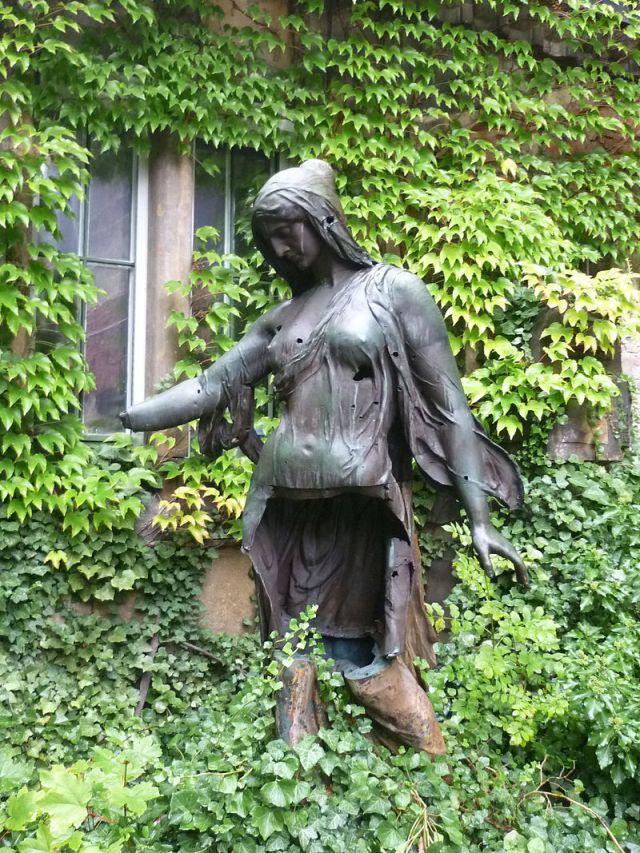
Ernst in the Zionskirche lapidarium. [Wikiwand]
…it was clear what it should represent: To learn from the city’s fate, to intervene before everything is held for disposal, as it was done in the art city Dresden. That was and remains to be the message. Remembering that Dresden’s fate was not a singular one, not then and certainly not now. Adding to the continual state of mourning, Dresden’s message about all that was lost, transcends remembrance: War is not the means of last resort it is the wrong means.
Sculptor Konstanze Feindt Eißner designed the Peace Prize. It is a replica of the Ernst statue as it exists now: riddled with bullet holes and a gaping wound in the abdomen, but Eißner has restored the statue’s legs and drapery. The parts replaced are the same gilt color as the replica in the Bürgerwiese; the areas above are weathered and grey.
Recipients of the Dresden Peace Prize have included Mikhail Gorbachev, Stanislav Petrov, Daniel Ellsberg, and war child Emmanuel Jal.
[A tip of the hat to Klaus who told me about the Dresden prize.]
Notes: Russian photographer Vova Pomortzeff toured Germany seeking out war memorials and published his photos and impressions as The Woe of the Vanquished . This is a very interesting book that raises questions about what the artist meant and what the audience understood.
Dresden Peace Prize site (in English)
Konstanze Feindt Eißner (in German)
German Art page on Hosaeus with many pictures.
